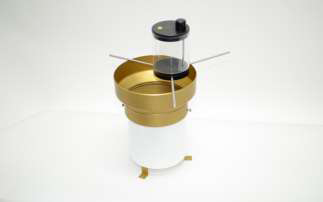






Overview
The Field Calibration Device is designed to be a field verification of accuracy for all Texas Electronics, Inc. rain gauges. This unit is not intended to substitute a dynamic laboratory calibration; however it is a great indicator of accuracy. The manual device comes complete with everything necessary to verify the accuracy and functionality of the rain gauge.
Read MoreBenefits and Features
- Quickly and accurately verifies calibration
- Works with all TE525 rain gauge series
- Easy-to-use
- Eliminates unnecessary downtime
- Unlimited number of field calibrations
Images

Detailed Description
Calibration
There are typical two different types of calibration for a tipping bucket. The first, most common yet least accurate is a static calibration. The second and most accurate is a dynamic calibration. (Note: This kit allows for a dynamic calibration of a rain gauge in the field.) Static calibration is when a specific volume of water is place into a tipping mechanism. The mechanism is then adjusted until it tips. This process is sometimes continued until both sides of the tipping mechanism tip at the specified volume of water. Dynamic calibration utilizes a similar technique but also tests over time. A specific volume of water is poured into the tipping mechanism over a specific period of time. The main difference in this calibration is that calibrating over time allows for compensation of error cause by spillage. When a tipping bucket fills to the point of tipping there is a brief time when additional water is allowed into the gauge. This additional water is called spillage or overage and typically causes tipping buckets to read low at high rainfall rates. Hence a quality rain gauge will be calibrated over a range of rainfall rates or flow rates to minimize this error. Note that ALL standard tipping buckets have spillage issues. This explains the need for a siphon rain gauge, such as our TR- 525-S-U, to regulate the flow into the tipping mechanism and therefore minimize the spillage over a much broader range of rainfall.
Specifications
FC500 Field Calibration Device comes with:
- 3 rods
- container
- black bag
- nozzle
- cleaning pin for nozzle
- instructions